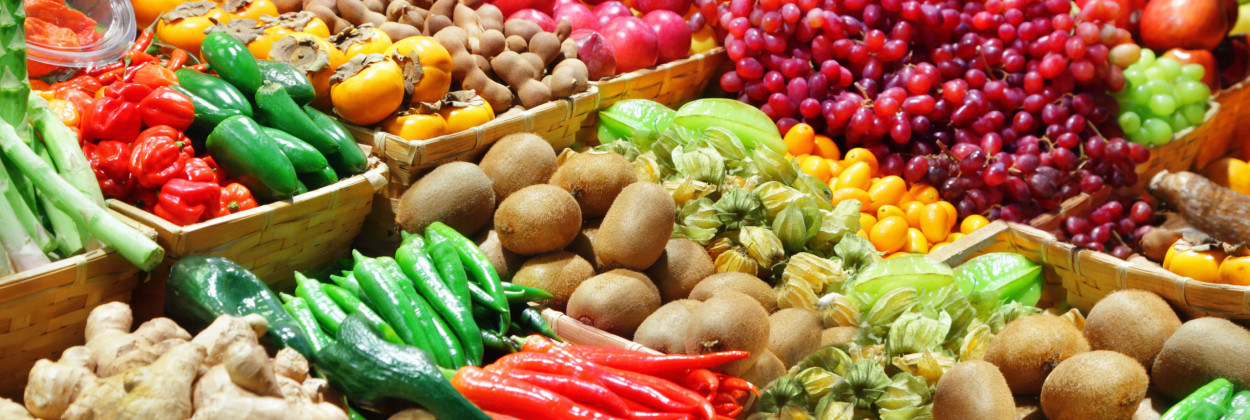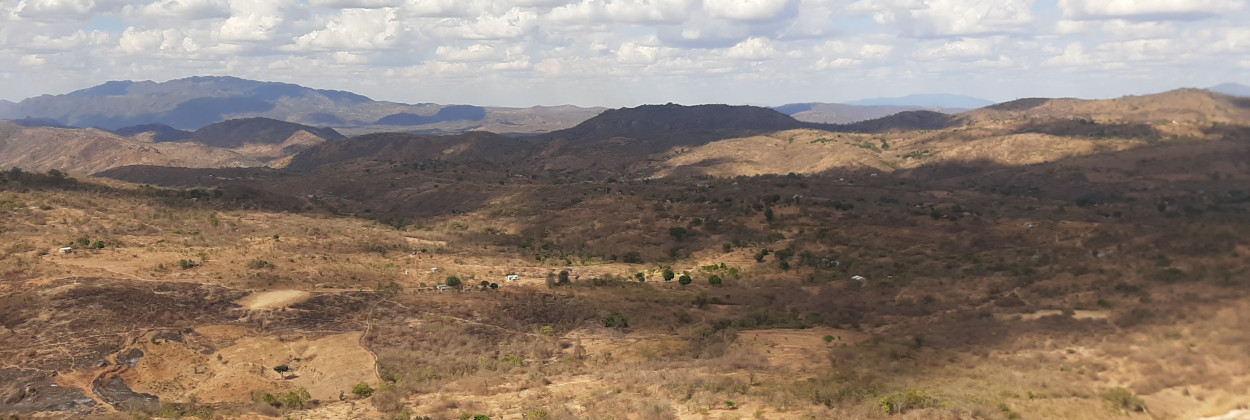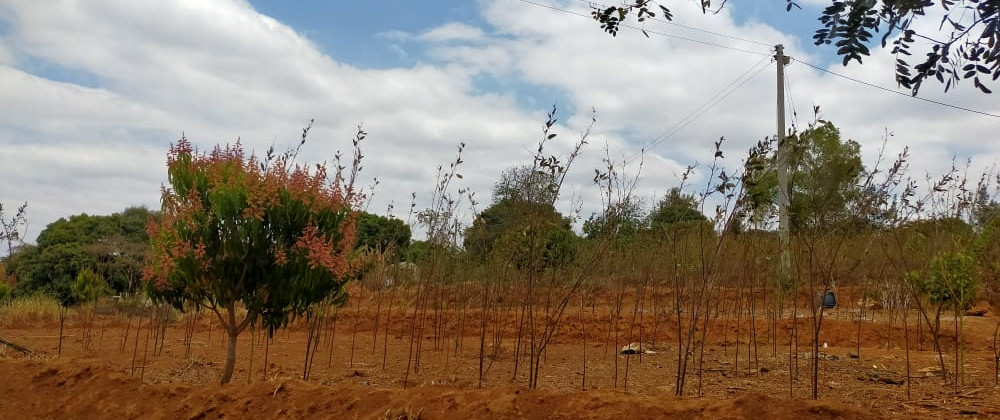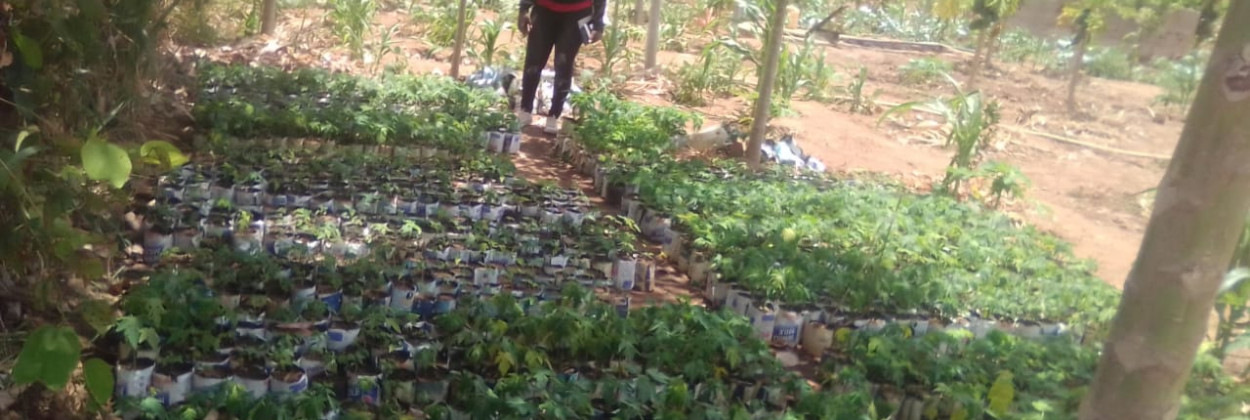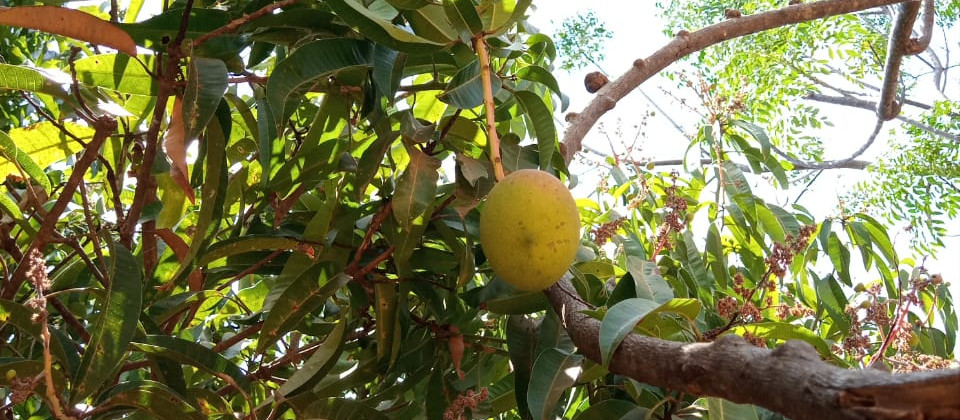The Kitui Food Hub is located in Kitui County, in the south-central part of Kenya. In 2019, it registered a population of 759,164 people. Kitui FH was established in the year 2012 after registration and certification compliance. It started its operations in the year 2015.
In Kenya, maize is the commonest staple food, followed by wheat and beans.
About 32.8% of children in Kenya achieve Minimum Dietary Diversity (MDD). Among the adolescent, females consume a more diversified diet compared to their male counterparts.
Among children under the age of five years, the national prevalence of stunting, wasting and underweight stands at 26%, 4% and 11% respectively. In Kitui County the prevalence rates of stunting and wasting decreased while as the rate of underweight went up. In Nyeri, the prevalence rate of all indicators decreased. Among adolescents, the prevalence of underweight in boys is higher than that of girls.
There is a notable upward trend in the rates of overweight and obesity in both boys and girls though girls are more affected than boys.
Iron, zinc, iodine, Vitamin A and calcium are the micronutrient deficiencies which pose a public health concern in Kenya.
The crops with the most important agricultural production in Kenya are maize (92.1% of farmers produce it), bean (60.8% of farmers), coffee (32%), pigeon pea (26.3%) and banana (21.1%).
Highlights about the work carried out in this Food Hub
Technological innovations in this Food Hub
The FH currently majors in the production, processing and value addition of mango value chain and sorghum products. Some of the products include mango innovations such as Mango powder, blended and composite flour from sorghum and peanuts /soya. Going forward, KEPC wishes to develop new innovative products from a blend of peanuts/soya and Quinoa. Quinoa products will eventually replace peanuts because Quinoa has nutrients of very high value compared to locally grown crops. Quinoa being a Novel product, KEPC targets children (infants and young children) and elderly people with this innovative food to address undernutrition and overall malnutrition.
Precision harvesting systems. The overall objective is to improve the shelf life and efficiency of harvesting mangoes. The specific objectives are to design and fabricate a fruit detachment and conveyance unit; to compare the shelf life of shaken-fallen mangoes and machine-harvested mangoes; to perform a cost-benefit analysis of using the harvester, and to optimize the harvester ergonomics (user comfort) through field trials and design improvement.
Solar drying. The overall objective is to produce and characterize tree tomato powder through solar and refractance window drying. To this end, a solar concentrating cabinet drier will be designed and fabricated, the effect of temperature and pulp layer thickness on drying kinetics and quality of tree tomato determined, and the drying kinetics and quality characteristics of tree tomato powder produced by the solar drier and the refractance window drier assessed and compared.
Milling. The overall objective is to produce blended flours with improved nutritional and functional properties. Legumes and cereals blended flours will be produced from local food raw materials and characterised according to their physicochemical and nutritional properties. Their sensory properties, shelf-life stability and microbial analysis will also be determined. For Tanzania, a minimum of three composite flours will be developed for both extruded and non-extruded flours. For Kenya, Quinoa seeds will be used to prepare blended flours, to make products with enhanced nutrient content and acceptable sensory attributes. The other flours will be wheat for snacks and maize for porridge.
Extrusion and baking. The overall objective is to process different locally available foods into novel convenient nutrient products, such as nutrient-dense flours that have the potential to address nutritional gaps, nutrient-dense snacks that have the potential to substitute low nutritional value snacks, and nutrient-dense noodles from locally produced foods. The nutritional and physicochemical properties of the developed food products will be determined. Product formulations will be developed using locally produced nutritionally rich foods. These will include cereals (maize/sorghum/millet), pulses (common beans) and oil seeds (soybeans/sesame) for all Food Hubs. Final products’ nutritional value, physicochemical properties, storage stability and sensory acceptance will be analysed. The final product that will be produced in this Food Hub is baby food (fruit).
Bio-based packaging. This action is aimed at developing and testing bio-based packages able to preserve the overall quality of food products from different Food Hubs, during storage and transportation. The activities to be done are the following: identification of different raw materials among several agricultural by-products from local regions to be used as material, optimisation of the coating formulation, assessment, characterization of preliminary obtained materials, pre-selection, testing at lab/small scale level of environmentally friendly, affordable, and suitable pack materials. This Food Hub is focused on bio-based package for therapeutic food and baby food, dried fruits and vegetables.
Highlights about the research with farmers
FoodLAND surveyed a total amount of 482 farmers in this region with the aim of improving the background knowledge of African smallholder farmers’ decision-making and of individual and contextual conditions. 273 out of these 482 farmers surveyed were women, and the other 209 were men. 52.3% of farmers are members of any local farmers’ associations.
According to the information gathered from the surveys, 73.4% of farmers’ income is lower than the average income in the region, the income of 16.8% of farmers is about the average or somewhat higher, and only 9.8% of farmers stated an income higher than average. Additionally, 45.4% of them are able to meet their household’s food needs, 39.4% experience some difficulties, and 15.1% face serious food shortages.
Besides, they have reported major worries regarding the near future about drought (4.25 on a scale from 1 to 5), food shortage starvation (4.19), infestation pests (4.11), cost price increase of fertilizer or seed (3.77), income reduction (3.77), and health disease (3.40).
With regard to their interest and propensity to introduce new technologies and/or productions, 85.4% of farmers are extremely or moderately interested in adopting a technological innovation (4.42 on a scale from 1 to 5).
Highlights about the research with consumers
With the aim of enlarging background knowledge of African consumers’ food preferences and behaviours and of their socioeconomic drivers and measuring the current level of dietary diversity, FoodLAND has assessed food consumption at both individual and household levels that provide a good measure of diet quality and diversity. FoodLAND has conducted surveys both in households and out of stores in Kitui, which is paired with this Food Hub. 508 people participated in the survey. Below you can find some highlights extracted from these surveys, regarding consumers’ preferences, habits, incentives, and barriers when it comes to choosing food products for their households.
Parallel to the survey instruments, a series of incentivised economic behavioural experiments were developed to gain insights into consumers’ conscious and non-conscious decision-making processes. During the experiments, participants were asked to make decisions on the use of assigned tokens, which were going to influence both their final earnings and the earnings of one or some other participants.
In order to also collect data on rural consumers’ socio-economic conditions and socio-demographics (e.g., migration), food provisioning, preparation and consuming habits and community conditions and services, while paying attention to the gender perspective, a series of surveys with randomized samples of rural consumers have also been conducted in this Food Hub. 500 pairs of women of reproductive age and one of their children between 6 to 23 months of age participated in the survey.
Urban consumers consider on average their household diet as moderately healthy (around 3.9 on a scale of 5). When asked about their propensity to include in their diets a new food product with augmented nutrient content (e.g., naturally improved bean with high levels of proteins and minerals) that could complement their current household diet, consumers report a high level of interest (about 4.3 on a scale to 5). When looking at the reasons behind the inclusion of new nutrient-dense food, Kenyan consumers rate the highest affordability, the possibility of enhancing the healthiness of their household diet, and their trust in doctor’s recommendations. The most rated obstacles are price, potential unfamiliar taste, and feeling of lower food safety.
As for the reasons behind usual food purchasing behaviours, respondents in Kenya rate the most on average food affordability (price) and availability. The food categories mostly lacking in the consumer’s household diet are on average vegetables.
Consumers were also asked about their interest in buying new local food products. They showed a high disposition to buy these local products (around 4.3 on a scale of 5). Among the reasons that make them choose the new local products, the three consumers rated the most were that they could afford it, it could be easily found where they usually buy food, and it could help local farmers.

